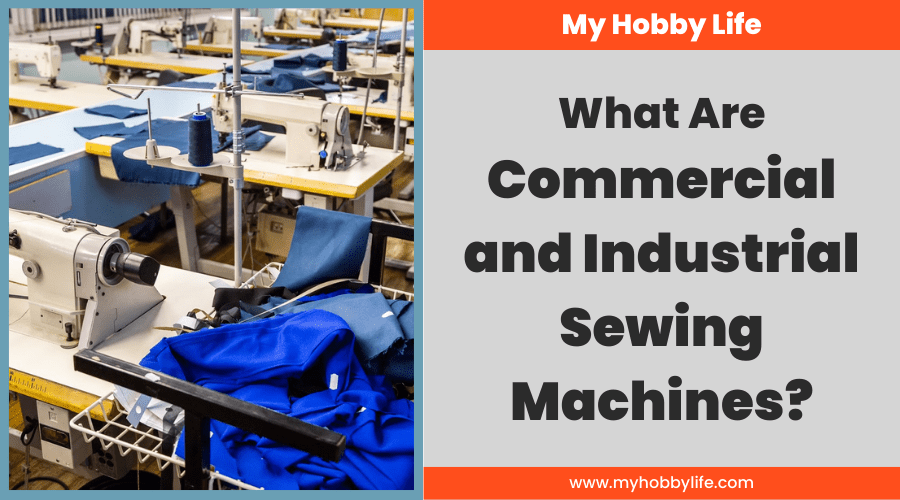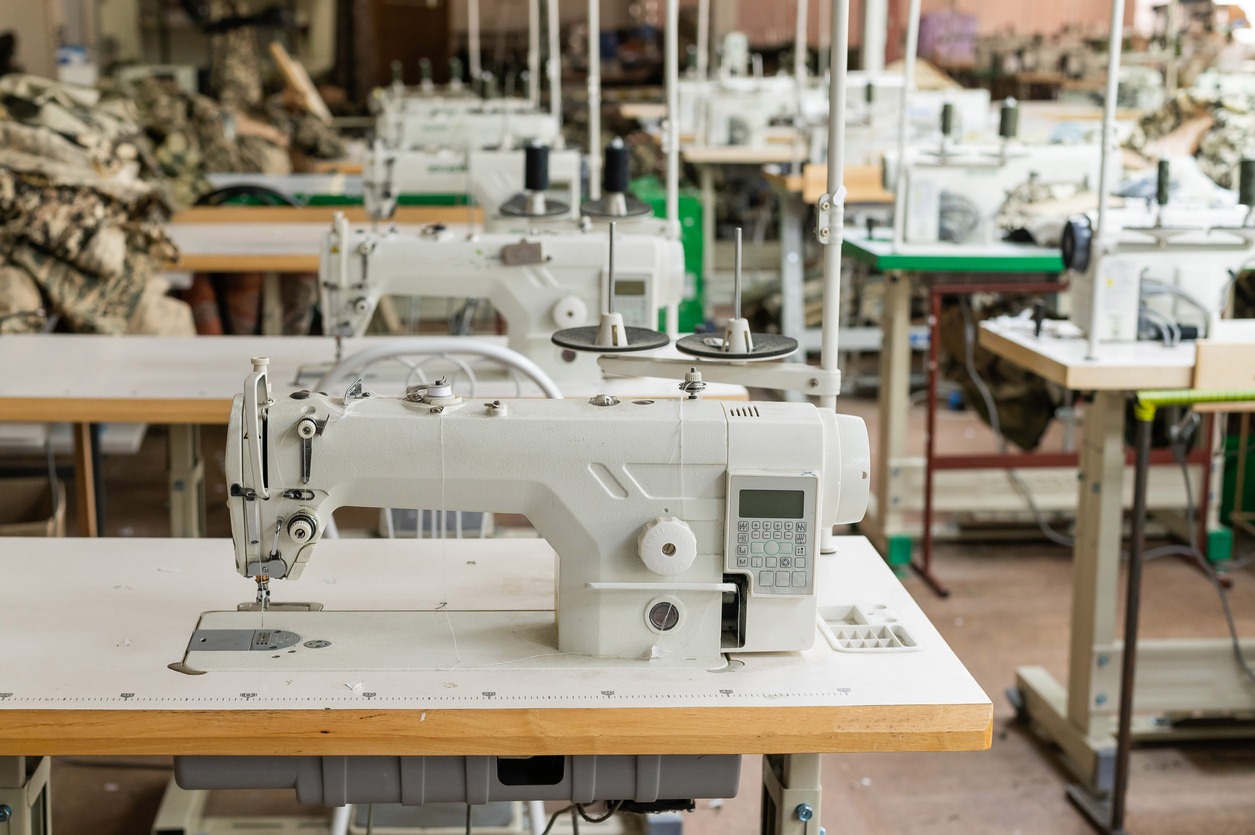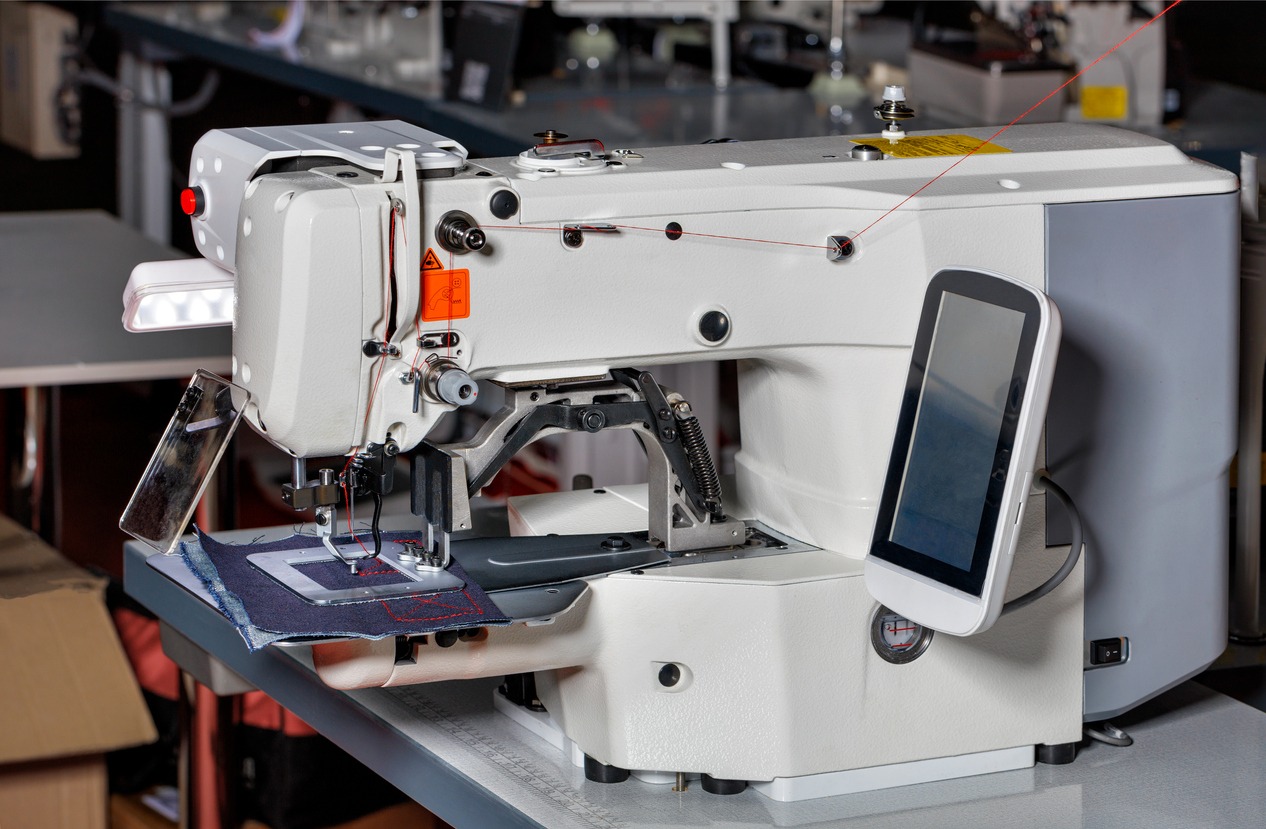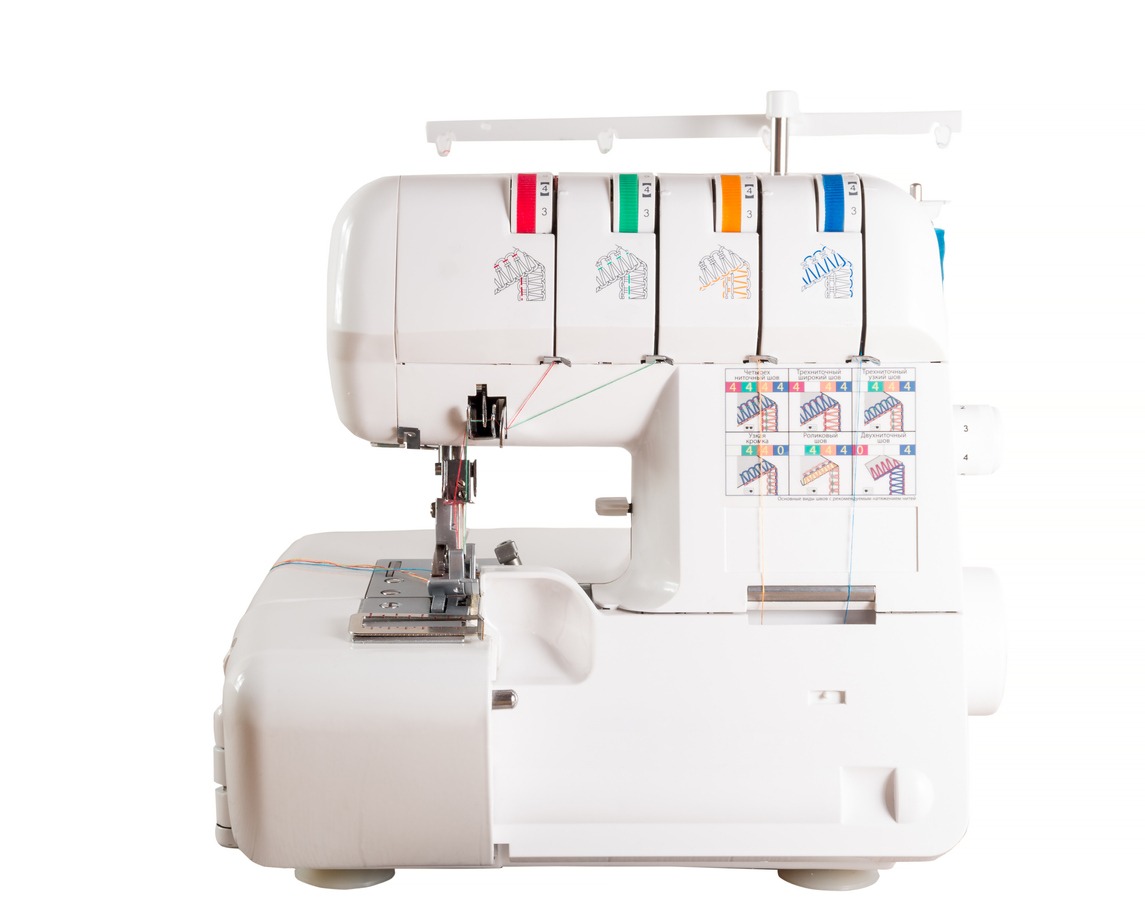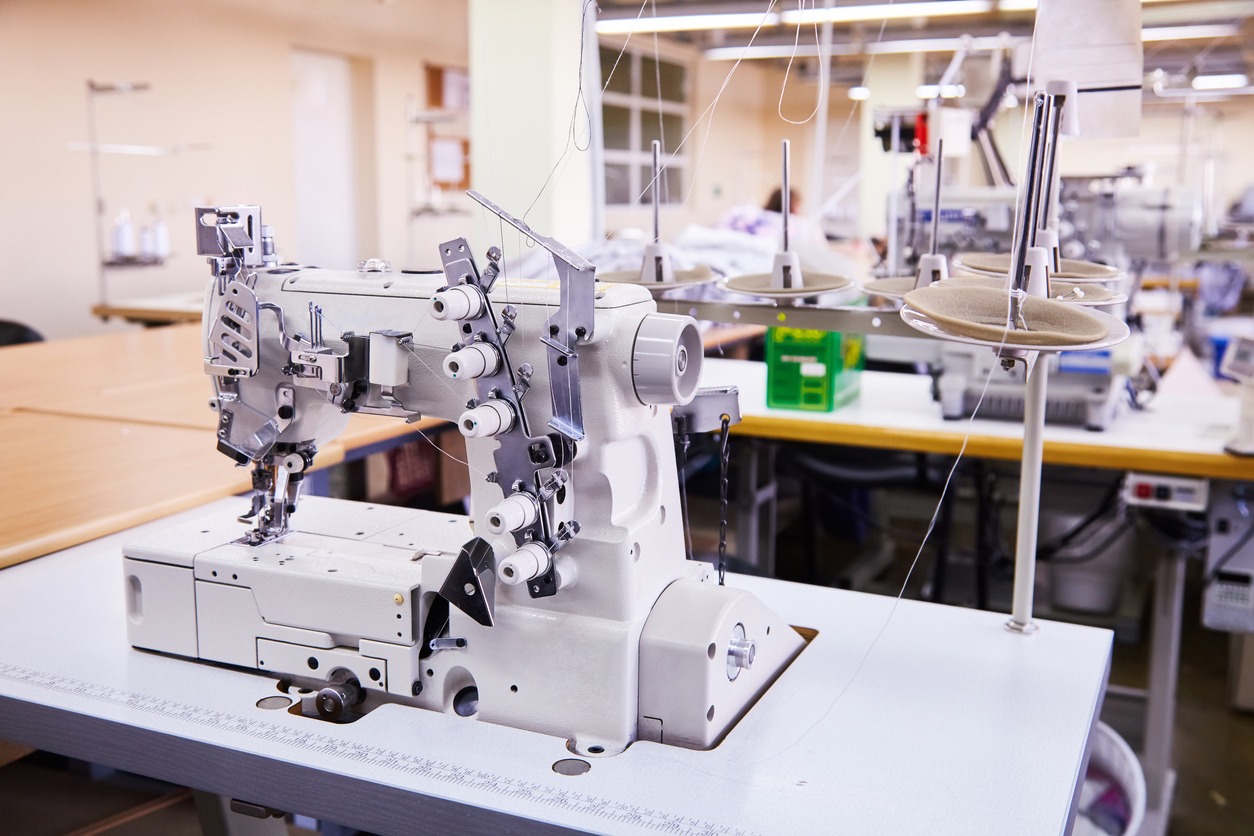Back then, textile and clothing companies hired tons of people to sew using conventional sewing machines, which took hours of work, effort, and trouble.
But those days are already gone. While there’s no doubt that the workers used to create intricate and exquisite pieces and designs, productivity wasn’t what can be accomplished today with newer and more efficient sewing technologies. One glance at these professional-grade computerized sewing machines and you already see their many features and functions that will benefit any professional sewist and clothesmaker.
What are commercial and industrial sewing machines? Are they the same?
The terms “commercial” and “industrial,” in the case of sewing machines, are used interchangeably. These machines are normally used for mass garment production. Commercial and industrial sewing machines are typically power-driven and run at a very high speed.
Commercial and industrial sewing machines are heavy-duty versions of the standard sewing machines for home use and for sewing as a hobby. In addition to making clothes, commercial and industrial sewing machines are also used for other related industries, such as draperies, upholsteries for furniture, stuffed toys, etc.
One of the common uses of commercial and industrial sewing machines is to perform the mass production of sewing of pockets into garments made of heavy fabric, such as canvas or denim for blue jeans. Did you know that a regular industrial sewing machine can sew 2,000 pockets in an eight-hour production cycle? Well, now you know.
Differences between domestic sewing machines and commercial or industrial sewing machines
- Stitches – Domestic sewing machines come with different stitches (and some of them are really fancy), while commercial or industrial sewing machines usually have only one of two stitches.
- Material use – Domestic sewing machines are created to work on most lightweight materials that may need repairing or modifying within the home. Some domestic machines, though, are designed to sew medium to heavy fabrics. On the other hand, commercial or industrial sewing machines typically work on thick and heavy fabrics and materials repetitively throughout the day in a commercial or industrial environment.
- Cleaning and maintenance – Domestic sewing machines don’t have to be cleaned as often as needed. In contrast, their commercial or industrial counterparts must be cleaned and oiled regularly to maintain their top performance. and meet commercial sewing demands.
- Purpose – Domestic sewing machines are designed for light sewing for a couple of hours at a time. Users of domestic sewing machines can stop and start projects easily. On the other hand, commercial and industrial sewing machines are designed for the heavy-duty workload. They can run for longer hours and work on various projects than a domestic sewing machine.
- Components – Commercial and industrial sewing machines are meant to withstand heavy workloads for continuous hours. It’s not a surprise that they contain some pretty hefty parts and components compared to the parts of a domestic sewing machine, which are typically smaller and lighter. Commercial and industrial sewing machines also have huge motors attached to them to be able to power them through several hours of work. On the other hand, domestic sewing machines typically have smaller, lighter, and more compact motors, making them capable of performing shorter and lighter sewing tasks.
- Pricing – It’s quite evident that commercial and industrial sewing machines cost way more than domestic sewing machines. It’s because businesses are more willing to pay for efficient sewing machines, and efficiency is every business’ priority. In the clothes and sewing industry, sewing machines that perform more quickly and efficiently are less likely to run into problems, which will mean more profits for the business. And this is why commercial and industrial sewing machines are worth the investment. While domestic sewing machines can work as fast and efficiently as they get, their overall performance may not make them financially viable.
Both commercial and domestic sewing machines have their advantages. It all boils down to what the user wants from a sewing machine to determine which is the best.
The main benefits of a commercial and industrial sewing machine
- Many in-built designs
- Connectivity to the Internet, allowing you to download different design templates
- Professional results with the least likelihood of errors
- Consistent results
- Durability
Here are some of the different types of commercial and industrial sewing machines
Single needle lock stitch machine
As the name implies, single needle lock stitch machines make lock stitches (stitch class 301). They are used for joining two or more fabric plies together. They are used to sew lightweight, medium-weight, and heavy fabrics and materials.
Overlock sewing machine or serger
Overlock sewing machines are designed for serging garment panels (such as trouser panels serging) and overedge stitch. They are mostly used in knitted garment sewing for overedge stitch. If you look at the side seam stitch of your shirt, it is sewn using of machine.
Overlock sewing machines come in 3 threads, 4 threads, and 5 threads overedge sewing. They can perform different stitches, such as stitch class 503, 504, and 512.
Buttonhole machine
As the name implies, this type of specialty sewing machine is used to make buttonholes on garments.
Bartack machine
This type of sewing machine is designed to reinforce the seam and garment components, as you can see in belt looping and at the bottom of the side pocket opening, which are done by bartacking.
Zigzag sewing machine
This type of sewing machine is used for making zigzag stitches. Zigzag sewing machines are typically used in the making of bras and jackets.
Multi-needle chain stitch machine
Multi-needle chain stitch machines are used for smocking and pin-tuck operations.
Flat lock sewing machine
This type of sewing machine is normally used for making cover stitches. It typically has 2 to 3 needles and is ideal for hemming the sleeves and the lower portions of knitwear, as well as creating ornamental cover stitches on garments.
Conclusion
We hope this article provides you with more in-depth knowledge about commercial and industrial sewing machines, including their advantages and differences from domestic sewing machines. We also list some specialty commercial and industrial sewing machines, although you may find a few other types.
